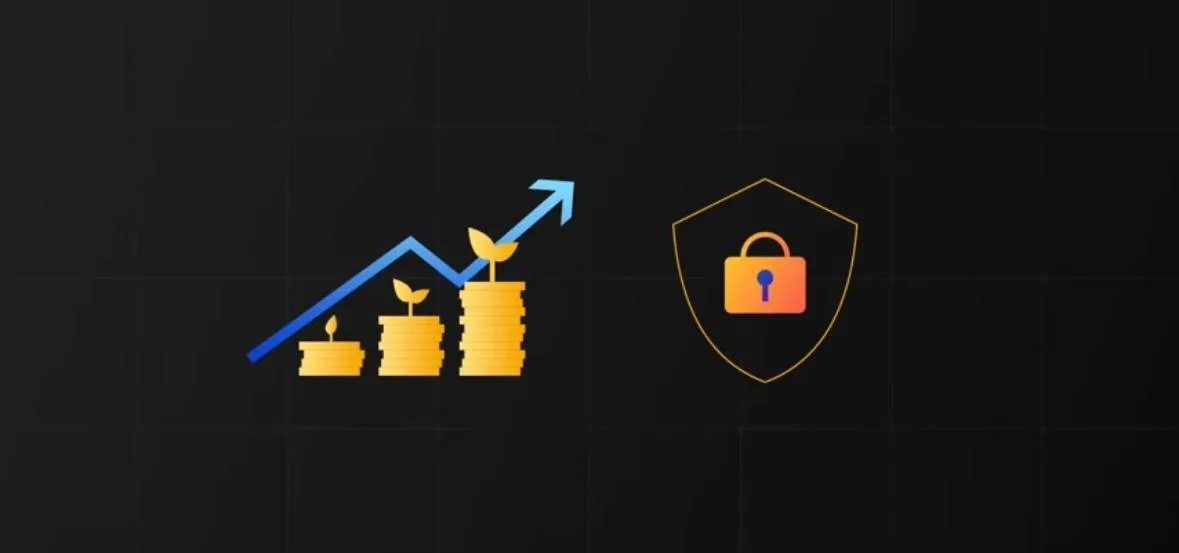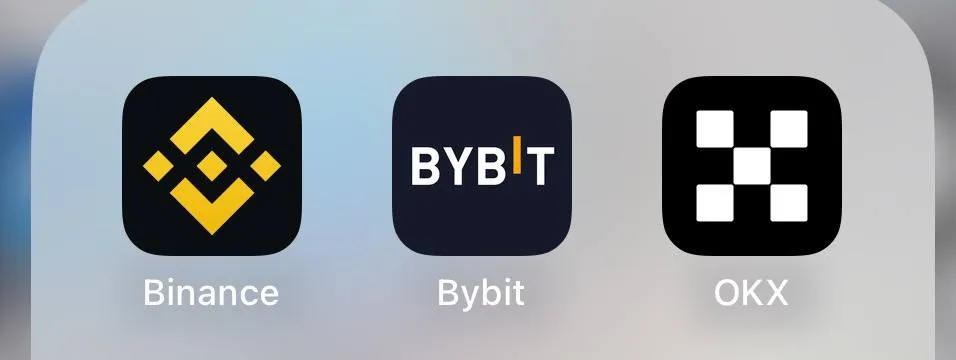
Cryptocurrency at interest - opening a deposit in cryptocurrency

Investing in cryptocurrency is becoming increasingly popular due to high returns and innovative approaches to earning. One of the ways to gain profit is to open a deposit in cryptocurrency with interest. This tool allows you not only to save assets, but also to increase their number due to the accrual of income. Let’s consider how such deposits work, where they can be opened, as well as the main risks and advantages.
Cryptocurrency deposits - how it works

Cryptocurrency deposits are an analog of traditional deposits in banks, but using digital assets. You place your cryptocurrencies on a platform that offers interest accrual for the use of your funds. Most often the funds are used for purposes such as:
-
Lending to other users. The platform acts as an intermediary between borrowers and depositors.
-
Staking. Cryptocurrencies are locked into the blockchain network to make it work, for which depositors are rewarded.
-
Liquidity pools. Your funds are used to enable transactions on decentralized exchanges.
Interest rates on such deposits depend on the cryptocurrency, deposit term, and platform terms.
Where you can invest in bitcoin at interest rates
Today, there are many platforms that offer the opportunity to open a deposit in bitcoin or other cryptocurrencies. Here are a few of the most popular ones:
1. Centralized exchanges (CEX)

2. Decentralized platforms (DeFi):
-
Aave
-
Compound
-
Yearn.Finance
3. Cryptocurrency wallets with accumulation features:
-
Nexo
-
Celsius Network
-
Crypto.com
4. Custodial platforms:
-
BlockFi
-
Gemini Earn
Before choosing a platform, it’s important to research its terms and conditions, level of reliability, and offered returns.
How to make a cryptocurrency deposit with interest
The process of opening a cryptocurrency deposit is simple and on most platforms includes the following steps:
-
Selecting a platform. Research the terms and conditions, fees and reputation of the platform.
-
Registration and verification. Create an account and go through KYC (identity verification) if required.
-
Account funding. Transfer your cryptocurrencies to the platform.
-
Select deposit type. Choose a fixed or flexible deposit based on your goals.
-
Confirmation and waiting. After depositing funds, simply wait for interest to accrue.
Some platforms offer automated reinvestment tools to maximize returns.
What risks there may be
Cryptocurrency deposits involve a number of risks that are important to consider:
1. Market risks
High volatility:
-
Cryptocurrency prices can fluctuate dramatically due to changes in supply and demand, news, regulation, and other factors.
-
Example: A sudden drop in the price of a popular cryptocurrency can result in a loss even while earning interest from staking.
Potential asset depreciation:
-
Some cryptocurrencies, especially new and little-known ones, can lose their value completely.
-
Example: Tokens from unsuccessful projects may become worthless.
2. Regulatory risks
Legal uncertainty:
-
Cryptocurrencies remain in a regulatory gray area in many countries. The introduction of new laws could make cryptocurrency transactions difficult or illegal.
-
Example: Cryptocurrency bans in China or India.
Asset freeze:
- Authorities may require platforms to freeze users’ assets as part of anti-money laundering or other crimes.
3. Technological Risks
Cybersecurity vulnerability:
-
Hacking attacks on cryptocurrency platforms, wallets or DeFi protocols could result in loss of funds.
-
Example: Hacking of exchanges such as Mt. Gox or FTX.
User errors:
-
Loss of access to the cryptocurrency wallet (e.g. forgotten password or lost private key) makes funds inaccessible.
-
Transfer errors (e.g. sending funds to the wrong address) are irreversible.
Platform or smart contract failure:
- Technical platform failures or errors in smart contract code can result in the lockup or loss of assets.
4. Financial Risks
Lack of guarantees of returns:
- Returns from cryptocurrency deposits are not guaranteed and promises of high returns are often fraudulent.
Commissions:
-
High transaction fees (e.g. on the Ethereum network) can significantly reduce returns.
-
Example: When transferring small amounts ($100), commissions (up to 30%) can make up a significant portion of the deposit.
Withdrawal complexity:
- Some platforms impose withdrawal restrictions, including minimum amounts or time delays.
5. Risks of platforms and projects
Fraud and scam projects:
-
Fake projects or exchanges can lure investors with promises of high returns and then disappear with their funds.
-
Example: Rug Pull type scam schemes where the creators of the project abruptly withdraw all funds from the liquidity pool.
Platform Bankruptcy:
- Crypto exchanges and platforms can go bankrupt, as happened with Mt. Gox and FTX.
Low reliability of projects:
- Investing in tokens of little-known startups or DeFi protocols is high risk due to lack of reputation or a proven team.
6. Liquidity and risks of funds lock-in
Asset freeze:
-
In some cases, staking or DeFi deposits have a fixed asset freeze period, making them unavailable in case of an urgent withdrawal.
-
Example: Freezing assets for several months in a liquidity pool.
Low liquidity:
- Some tokens have low liquidity, making them difficult to sell at market price.
7. environmental and social risks
Criticism of energy consumption:
- Some cryptocurrencies (e.g. Bitcoin) have been criticized for their high energy consumption, which may lead to restrictive measures by authorities.
Social perception:
- The use of cryptocurrency for illegal purposes (e.g. money laundering) may affect its popularity and cause further restrictions.
8. Psychological risks
Emotional decisions:
- The high volatility of cryptocurrencies can cause investors to become stressed and want to sell assets quickly when the price falls, often resulting in losses.
Fomo and greed:
- Fear of lost profits (FOMO) or overconfidence in market growth can lead to hasty and rash investments.
How to calculate the possible earnings from such deposits
The following formula can be used to calculate the return on a cryptocurrency deposit:
For simple interest (APR):
If the interest is not reinvested:
Earnings = Principal * APR/100 * Time/12
166$ = 1000$ * 200/100 * 1/12
Where:
-
Principal - amount deposited;
-
APR - annual percentage rate of return;
-
Time - deposit period in months.
Advantages and disadvantages of cryptocurrency deposits
Advantages:
1. High return potential:
-
Cryptocurrencies often exhibit significant volatility, which can lead to high returns when invested correctly.
-
Some platforms offer high rates of return for holding cryptocurrencies (e.g., steaking or DeFi protocols).
2. Decentralization and independence:
-
Cryptocurrencies are not controlled by central banks or governments, making them more resistant to inflation and economic crises in national currencies.
-
Ability to make international transfers without intermediaries or restrictions.
3. Affordability:
-
Almost anyone with access to the internet can invest in cryptocurrencies. There is no need to open a bank account.
-
Some platforms require minimum amounts to start investing.
4. Transparency and data protection:
-
Blockchain technology ensures transparency of transactions and security of funds.
-
User privacy is protected as transactions do not require the disclosure of personal data.
5. Wide range of tools:
- Various options for generating income: staking, farming, DeFi lending, participation in ICOs and IEOs.
Disadvantages:
1. High volatility:
-
Cryptocurrency prices can fluctuate wildly in short periods of time, increasing the risk of capital loss.
-
Sudden market crashes can nullify the return on investment.
2. Lack of regulation:
-
In some countries, the legal framework for cryptocurrencies is absent or just emerging, creating uncertainty for investors.
-
The possibility of platforms being shut down or blocked due to changes in legislation.
3. Risks of cyberattacks and fraud:
-
Vulnerability of cryptocurrency platforms to hacker attacks can lead to loss of funds.
-
High risk of encountering fraudulent projects, especially DeFi or ICOs.
4. Storage difficulties:
-
Secure storage of cryptocurrencies requires special wallets (hardware or software), the loss of which can lead to loss of access to funds.
-
User errors (e.g. sending funds to the wrong address) are not correctable.
5. Lack of guarantees:
-
Unlike traditional bank deposits, cryptocurrencies are not covered by deposit insurance schemes.
-
Losses from price collapses or platform crashes are not compensated.
6. Difficulty for beginners:
-
Successful investing requires an understanding of blockchain technologies, the principles of crypto exchanges, and the peculiarities of various tokens.
-
A high entry threshold in terms of knowledge can be a barrier.
Conclusion
Investing in cryptocurrency at interest is an attractive tool to increase capital, especially for those who are already familiar with the cryptocurrency market. However, it is important to keep in mind the risks involved and carefully choose a platform to place your funds on. Weigh the pros and cons to make an informed decision.
Frequently Asked Questions
1. What is the minimum amount needed to open a cryptocurrency deposit?
The minimum amount depends on the platform, but it often ranges from $10 to the equivalent of 0.001 BTC.
2. Which cryptocurrencies can be invested at interest?
The most popular ones are Bitcoin (BTC), Ethereum (ETH), USDT, USDC, BNB and others.
3. Can I withdraw funds early?
On flexible deposits it is possible, but on fixed deposits there may be a penalty or impossibility of early withdrawal.
4. How to choose a reliable deposit platform?
Study reviews, reputation, commissions and terms and conditions of the platform.
5. What are the risks associated with DeFi platforms?
The main risks include bugs in smart contracts, hacker attacks and high asset volatility.